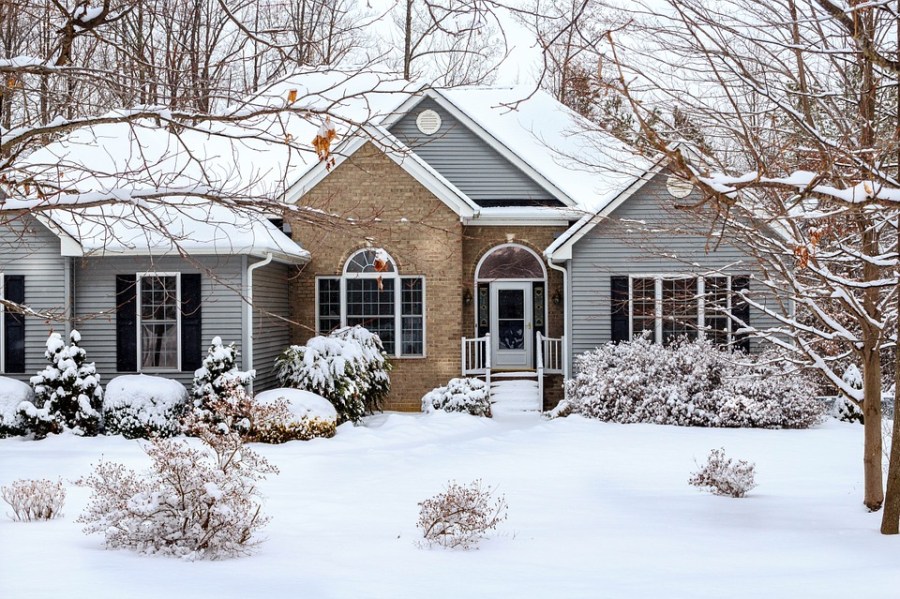How To Repair Hole In Vinyl Siding

Vinyl siding installation should be left to the pros unless you're confident that you have adequate carpentry skills and experience. The upside of doing the project yourself is that you can cut the cost of installation to almost half of what you will likely shell out to hire a contractor. The installation of vinyl siding itself is not that hard, but it does require proper planning as well as precise measurements, calculations, cuts and leveling to ensure that the panels fit your wall perfectly.
The steps for vinyl siding installation below assume that you have completed installing the panels for the soffit, which is the underside of the roof overhang, and the fascia, which is the horizontal band along the bottom of the roof. For this project, you will need the following tools:
Power saw Hammer Tin snips Utility knife Tape measure Chalk line Level Ladder
Apart from vinyl siding panels, the other needed materials are:
Starter strips J-trims Corner moldings Utility trims Drip caps Housewrap and A lot of nails, preferably those with wider heads Plywood
Keep in mind that even many pros prefer not to take this job on alone. Have one or two friends help you. Once you have all tools and materials listed above, you're ready to take on this vinyl siding installation DIY.
Step Remove Obstacles
Clear the wall of anything that will get in the way of the vinyl siding such as exterior lamps, retractable clothesline spools, address plates or old vinyl sidings. Plan the disposal of your old siding properly. Don't mess with utility fixtures or the electric meter. You need to work around them.
Measure from the eave down to the bottom where you'll nail the starter strip. Most vinyl sidings are 12 feet long and eight inches wide. This means that if the distance between the eave and the bottom is divisible by eight inches, you can connect your top panel directly to the J-trim. Most of the time, however, you will have to modify your last top panel and use a utility trim to install this final piece.
Find Your Level Points
Find the level points at the bottom for the starter strip and mark them with the chalk line. Try to be as precise as possible with the level points. This will make the job easier as you start installing the vinyl siding.
Attach the Starter Strip and Vertical Trims
Align the starter strip carefully along the chalk line and nail it firmly to the wall. Nail 3 ½ inch by ½ inch plywood pieces along the top of the starter strip to make it sturdier and help it hold up the vinyl siding panels. Next, attach the vertical trims, including the corner posts and end channels. You may also attach the trims around the windows and doors at this point.
Cut the Vinyl Sidings According to Length
Measure the distance between the vertical end posts and cut the vinyl panels according to length for each row. Allow for a ¼ inch distance between the end of the siding and the corner post. Increase the distance to ⅜ inch in areas where the temperatures go as low as 40 degrees Fahrenheit. Vinyl siding expands and contracts along with temperature fluctuations. The gap will prevent damage to the siding.
Install the Vinyl Sidings
Sheath the first few feet above the starter strip with the insulation or moisture protection material, and then snap and lock the first vinyl siding row on the starter strip. Nail the panels every maximum of 16 inches on the framing studs or furring on the wall. It is important to remember not to nail the vinyl sidings tightly against the wall and position the nail at the center of the slot; leave a 1/32 inch gap between the nail head and the vinyl siding. You've installed each panel correctly if the siding can freely move from side to side. When you need to overlap panels to span a gap between posts, make sure that the panels overlap by about an inch. Work your way up around the wall cutting around doors, windows and lamps using the tin snip.
Finish Up
As you reach the soffit on the eaves, measure the width that you need for the last piece in several locations and modify the vinyl siding panel according to the measurements. Install a J-channel. Make tabs on the cut edge of the panel every six inches using a snap lock punch. Install a utility trim into the J-channel. Lock in the last panel that you have modified on the last row and snap it into the utility trim on top of the wall.
MORE FROM QUESTIONSANSWERED.NET
How To Repair Hole In Vinyl Siding
Source: https://www.questionsanswered.net/article/how-to-install-vinyl-siding?utm_content=params%3Ao%3D740012%26ad%3DdirN%26qo%3DserpIndex
Posted by: saylorsansion.blogspot.com

0 Response to "How To Repair Hole In Vinyl Siding"
Post a Comment